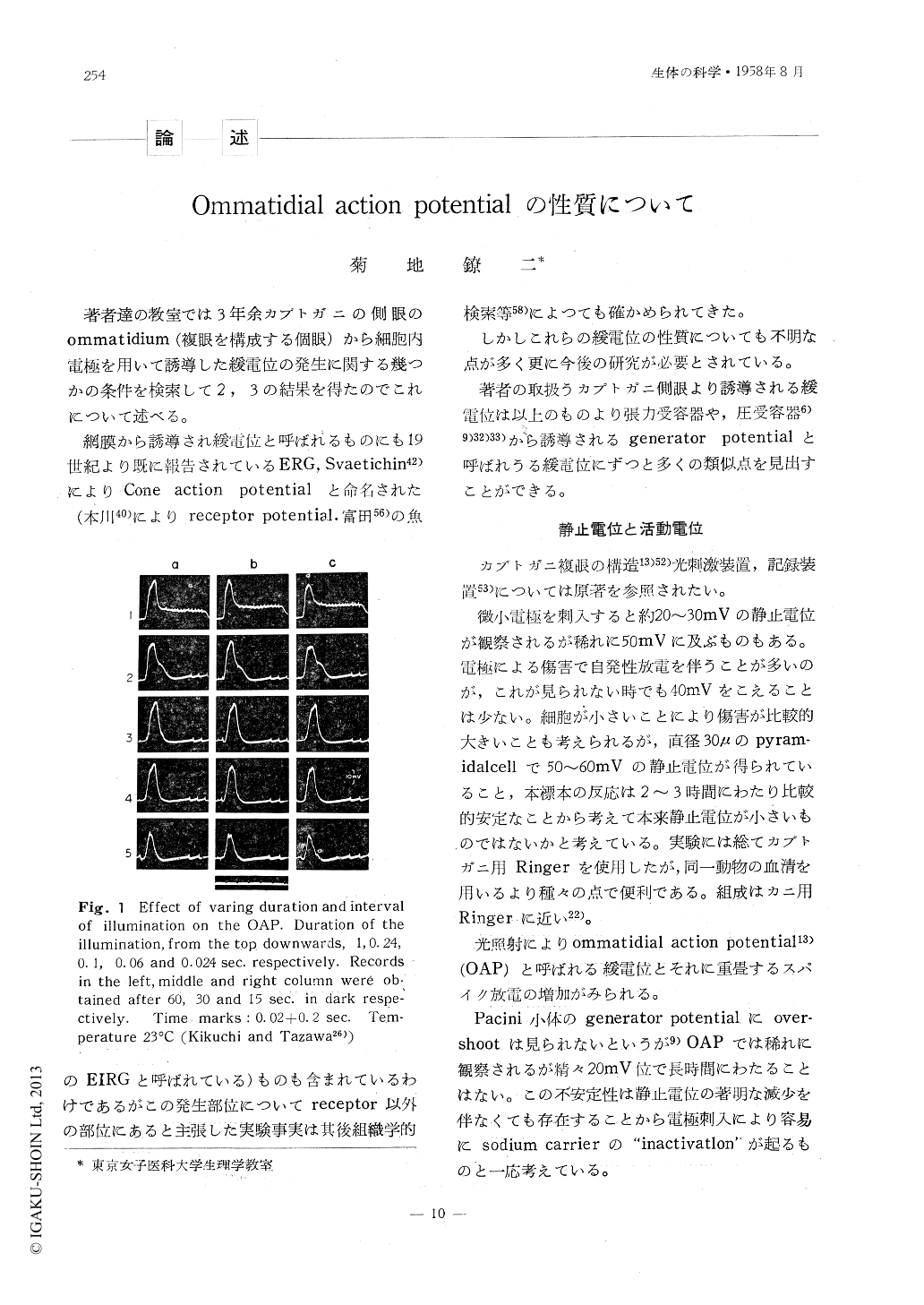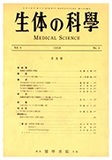- 有料閲覧
- 文献概要
- 1ページ目
日本産カブトガニ(Tachypleus tridentatis)の側眼のommatidiumの単一経胞内に3MKClを満たした微小電極を刺入して光刺激で得られるommatidial action potential(OAP)の性質を調べた。
2)OAPは稀れに最高約20mVに達するovershootを示したが,これは短時間の中に減少した。
3)OAPは通常3相に分けることができる。即ち初期の大きく脱分極する部分(dynamicphase),ほゞ一定のより低い脱分極状態(staticphase),off-sign後の複分極過程(off-effect)。
4)OAPの潜時は照射時間の変化によつて殆んど影響されなかつた。
5)dynamic phaseの大きさはある範囲で,照射光強度,間隔,膜電位の増加につれて増大した。
6)弱い照射光,徐々に強度の増加する刺激光によつては明瞭なdynamic phaseは認められなかつた。
7)下降期の長さ及び経過はdynamic phaseの大きさ,温度に依存した。
8)照射時間が0.1秒を越えるとdynamicphaseは増大せず,humpに始るstatic phaseのみ延長した。
1) The properties of the ommatidial action potential (OAP) of the lateral eye of the Japanese horsechoe crab (Tachypleus tridentatus) were studied by means of an intracellular microelectrode.
2) The OAP showed seldom an overshoot which was about 20mV at the highest but decreased within a short period.
3) The OAP could be usually divided into three phases: the dynamic phase, the initial maximal depolarization; the static phase, the successive less but sustained depolarization; the off-effect, the phase of repolarization following the cesastion of the illumination.

Copyright © 1958, THE ICHIRO KANEHARA FOUNDATION. All rights reserved.


